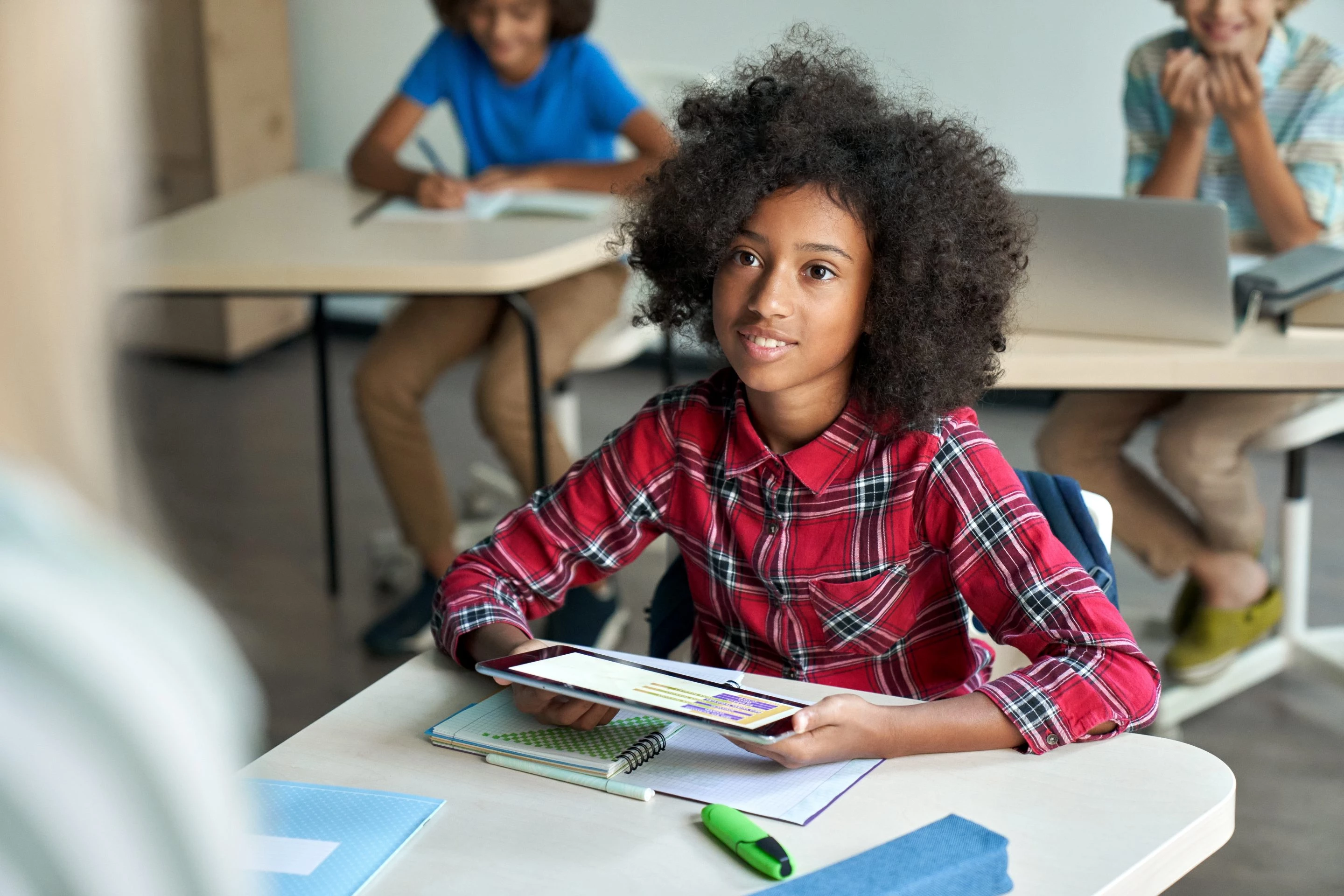
by Bonnie D. Houck, Ed.D.
What does it mean to be a reader in the 21st century? Many studies indicate that reading print offers increased metacognition and comprehension over online reading. However, is this truly the case or is it simply the result of studying students that have not had explicit instruction in how to read online? Although many of us use online and digital text formats, how much instruction have we had in how to navigate and comprehend it? Do these studies illuminate the reality that we need to learn how to be both an effective reader of digital AND print texts?
Balancing our time between reading print and digital texts requires a nimble brain that can make connections and develop metacognitive skills in and across both environments. Students read online and often do so with very little guidance or instruction (Rosko & Brueck, 2009). It is time for educators to embrace the notion that we need to shift the way we teach students to read and integrate digital experiences into our daily instruction.
“E-books have the potential to change the way our students read and consume text because of their interactivity and convenience…Reading comprehension research with multi-touch devices is still in its infancy and students will need to adapt new reading strategies in order to maximize their learning in this environment.” – Schugar, Smith, & Schugar, 2013
Reading is collaboration between the reader, the text, and the purpose. We all want students to be engaged readers who love to read, choose to read, and have the skills and strategies to read even when text is difficult. Achieving this auspicious goal takes a great deal of instruction and practice when reading any text, but schools tend to focus on teaching students to read print over digital texts because it is familiar and still represents the majority of available curricular resources. As our culture embraces the world of technology, we need to broaden the types of texts our students read. It’s time for a paradigm shift to change that practice!
The Benefits of Digital Reading
What do teachers and parents need to think differently about the digital texts we ask students to read? Why is it important to have a balanced reading brain?
- Motivation and Engagement: Children are digital natives. Toddlers can artfully navigate applications and websites. Research has clearly proven that children who are motivated, interested, and engaged in a reading task have increased comprehension. Digital reading offers a HUGE opportunity: it’s familiar turf for students and a medium they already enjoy.
- Flexibility and Choice: The ability to navigate hyperlinks, quickly check the meaning of unknown words, interact with visual and text options, or connect to short enhancement video clips, provides digital readers with many options. Students who can make decisions about their learning have an increased sense of ownership, purpose, control and confidence (Perks, 2010). Moving between different formats increases cognitive flexibility and decision-making. Reading on a screen requires a different kind of visual and mental flexibility. Digital readers browse, skim and scan, look for keywords, read in a less linear way, and are more selective (Liu, 2005).
- Promotes Inquiry and Strategy Application: Reading online requires using critical reading strategies such as making, confirming, and adjusting predictions and inferences, and evaluating and synthesizing ideas beyond the level required by printed text (Coiro, 2015). Information is presented and structured in a variety of ways, requiring the reader to monitoring comprehension and apply different strategies when meaning breaks down. Readers must continuously make decisions about how to summarize key details and prioritize information, when to move between hyperlinks and sites to clarify and deepen understanding and determine what information has value and relates to the ideas that are forming in the reader.
- Scaffolds and Supportive Enhancements: Digital reading platforms can enhance the reading experience by providing visuals, embedded questions and prompts, supports such as vocabulary inserts and hyperlinks, that add support and extend and deepen comprehension. Many digital reading platforms offer a data management feature that can share important information about a student’s reading in a quick and accessible format. These resources can contribute to conversations between teacher and students about growth, strategy application, and goal setting that reinforce and motivate students to persevere and develop as a reader.
Acknowledging and Addressing the Challenges
Most educators and parents have spent their lives reading predominantly print texts. They are comfortable with this format and may have pleasurable aesthetic feelings about the experience of holding a book and turning the pages. When we read print, we have familiar tactile and visual responses, recognize texts’ structures and marks, and other rituals that assist in memory. Reading online is vastly different and can offer challenges as we shift from traditional print.
- Learning Visual Strategies: The navigations and perceptions of how readers interact with online layouts takes mental and physical energy that is not required when reading print (Fidel & Dyson, 2007). Reading on a screen requires the eyes to skim and move across the page differently. Hyperlinks and other visual cues can be distracting.
- Annotating Digital Texts: When reading deeply, students need strategies for marking texts and note taking. Learning to do these annotation skills requires different strategies online (Konnikova, 2014).
- Increased Self-Regulation: Digital readers have to self-monitor and self-regulate (Coiro, 2015). The ability to read strategically does not necessarily transfer to reading on a screen. Digital reading requires a different skill set.
- Change: Embracing the shift to include digital texts into the reading experience requires us to rethink and revise our historic process. Change can be scary. Parents and teachers want to do their best and may have anxiety or concern if they believe they lack the knowledge, skill, or resources to implement the change successfully (Fullan, 2001). For many, it may be entering a new frontier.
Fostering the Balanced Brain
How can we create a balanced brain – one that can easily read and comprehend BOTH digital and print? Teachers have a myriad of responsibilities, so how can we move forward to meet this important change in a reasonable way? We can start with changing our own perceptions, incorporating more digital texts into our teaching, and providing more resources for students.
- Develop your Passion for Digital Texts: We teach what we know and love. If we want to be successful role models and teachers, we need to develop an appetite for reading online. Consider adding daily reading of digital text into your routine.
- Model and Discuss your Digital Experiences: Share your experiences with digital reading with your students. Talk about your successes and your struggles. Share the strategies that you’re developing to read, make connections, and learn from digital experiences. Explain how you are connecting this newer way of accessing information with the knowledge you have gained from print.
- Collaborative Discussions: Create peer groups to discuss online reading experiences. Highlight key reading skills and strategies that support successful reading in both formats and ask students to share examples of successes and challenges.
- Increase Students’ Access: Consider digital texts as an important part of your classroom library and resources for small group and independent reading. Research supports a balance of fiction and informational texts selections in a classroom library, with at least 10 books per student (International Reading Association, 2010). In a typical classroom of 25-30 students, this is a minimum of 250 to 300 texts. Online resources, digital texts and eBooks, can be a welcome and affordable source for texts as teachers strive to maintain current choices for student self-selection. In addition, digital formats allow selections to be updated more often.
Like many educators today, I hold that it’s not as much about print vs. digital but about getting students excited about reading in a variety of formats and supporting them in how best to approach different kinds of texts. Teachers that use digital reading platforms like LightSail can leverage the literacy skills traditionally taught with print books– like annotation or class discussion – into whole new ways of interacting with texts.
Bonnie Houck brings a lifelong passion for education and literacy to her work as a consultant, coach, speaker, trainer, and teacher, and specializes in literacy leadership development and positive school change. She combines a wealth of leadership experiences ranging from school and district leadership to state-level administration to coordinating the University of Minnesota’s reading program, and currently provides training through the Minnesota Elementary School Principals’ Association (MESPA) and works with many schools and districts as a coach and consultant. Previously, Bonnie served as the state reading specialist for the Minnesota Department of Education and was the Program Director for the Education and Learning at a leading philanthropic organization. Bonnie can be reached at [email protected] or through www.houcked.com.
References
Coiro, J. (2015). Purposeful, critical, and flexible: Key dimensions of online reading and learning. In Spiro et al (Eds.) Reading at a Crossroads? Disjunctures and Continuities in Current Conceptions and Practices (pp. 53-64).
Fadel, L. M. and Dyson, M. C. (2007). Enhancing interactivity in an online learning environment. Lecture Notes in Computer Science, 4663. pp. 332-344. ISSN 0302-9743 doi:10.1007/978-3-540-74800-7_27
Fullan, M. (2001). Leading in a culture of change. San Francisco: Jossey-Bass.
International Literacy Association. (2010). Position Statement on Classroom Libraries. International Literacy Association. Newark, DE Retrieved April 8, 2016: http://www.literacyworldwide.org/docs/default-source/where-we-stand/providing-books-position-statement.pdf?sfvrsn=6
Konnikova, M. (2014). Being a better online reader. The New Yorker. Retrieved April 8, 2016: http://www.newyorker.com/science/maria-konnikova/being-a-better-online-reader
Liu, Ziming (2005). “Reading behavior in the digital environment: Changes in reading behavior over the past ten years.” Journal of Documentation, Vol. 61 Iss: 6, pp.700 – 712.
Perks, K. (2010). Crafting Effective Choices to Motivate Students. Adolescent Literacy in Perspective. March/April 2010. Ohio Department of Education. Retrieved April 8, 2016: http://www.ohiorc.org/orc_documents/orc/adlit/inperspective/2010-03/in_perspective_2010-03.pdf
Roskos, K., Brueck, J., & Widman, S. (2009). Investigating analytic tools for e-book design in early literacy learning. Journal of Interactive Online Learning, 8(3), 218-240.
Schugar, H.R., Smith, C.A. & Schugar, J.T. (2013). Teaching With Interactive Picture E-Books in Grades K–6. The Reading Teacher, 66(8), 615–624. doi: 10.1002/trtr.1168
Wolfe, M. (2010). Our ‘deep reading” brain: Its digital evolution poses. Retrieved from http://niemanreports.org/articles/our-deep-reading-brain-its-digital-evolution-poses-questions
Posted on 6.Jun.16 in Literacy Strategies





